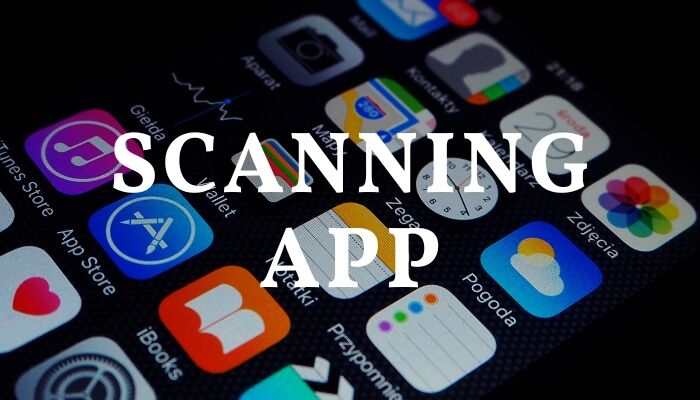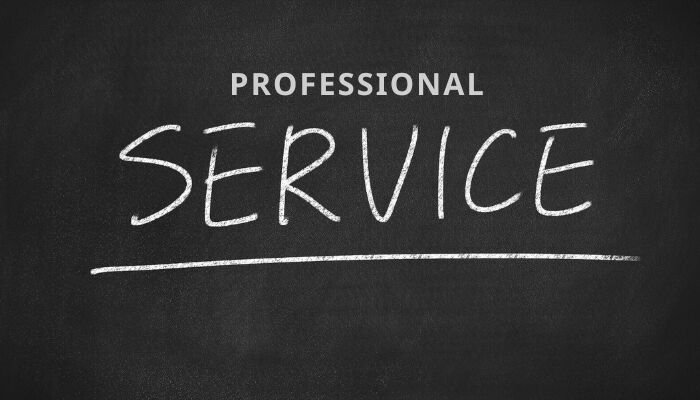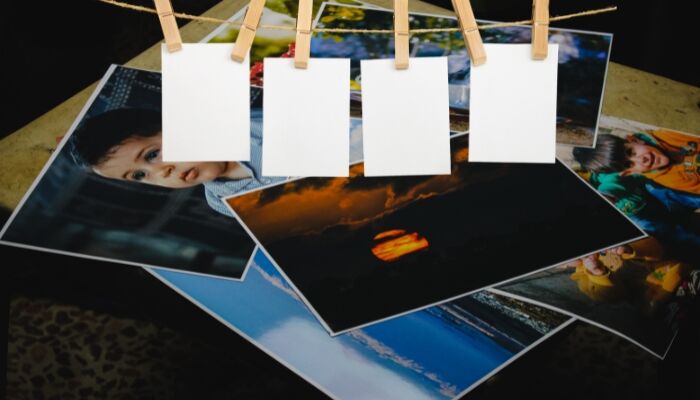
lewis
How much does it cost to digitise a photo?
- November 28, 2022
- , 11:10 am
- , Digitize media
If you were born before the year 2000, chances are your house is filled with old photos that carry not only your memories, but also the memories of your parents, grandparents, friends, and other relatives. The biggest issues with these old photos are they get damaged over time and occupy a lot of space, which can be solved by digitising them. But how much does it cost to digitise a photo?
The price of digitising a photo depends on a lot of factors. It can vary according to how many photos you are going to digitise, what resolution you want the scanned photos to be, what method you are using, whether you want your printed photos or negatives or slides to be digitised, etc.
Let’s take a detailed look at the cost of digitising a photo and what affects it.
What does it cost to digitise a photo?

When you ask someone how much it costs to digitise a photo, you won’t be getting any concrete number, because there are too many factors at play to get an exact answer. The factors the price of digitising photos depend on are as follows.
The method you will be using
The cost of digitising a photo depends a lot on the method one uses to do so. There are three ways one can digitise their photo. They can use an app, they can buy a scanner and scan them, and they can book a digitising service. Let’s take a look at all of them:
1. Using an app
The easiest way to digitise a photo is to use an app on your smartphone. There are plenty of photo scanning apps, both free and paid, that are used by millions of people worldwide to scan and digitise photos. You can scan, crop, and edit your photos according to your wish. Not only is this process the easiest, but it is also the cheapest as well.

Once you finish digitising your photos, you can then share these via email, and upload them to the cloud or social media. But, this method has some drawbacks too. First, you will need a lot of time to scan your photos, especially if you have loads of photos, you may have to spend weeks before you are done processing each of them.
Second, the result of digitising photos with apps, no matter how good they are, isn’t the best. You can make do with the finished product, but if you want high-quality photos, then using apps isn’t the right choice for you.
Now, as far as the cost of using apps to digitise photos is concerned, the free apps are, well, free. But the paid apps, which produce the best results, have varying costs. Some of them have one-time-only payments, whereas others have monthly subscriptions. You have to pay anywhere between $4.99 once to $5.99 per month on average to get the best photo scanning apps’ services.
The best photo-scanning apps are:
- Google PhotoScan
- Camscanner
- Adobe Scan
- Photomyne
- SwiftScan
- Turboscan
- Filmbox
- Picscanner, etc.
2. Using a scanner
If you want to digitise your photos yourself, but don’t want any half-measures, then you should invest in a scanner. There are plenty of scanners that can digitise photos, some are dedicated to scanning photos, while others can scan both documents and photos. The scanners that are specifically designed for scanning photos provide the best results, while the multipurpose ones aren’t bad either.
If you scan photos using a scanner, you will end up with very high-quality results. You can also edit the photos as you need. There are bulk scanners that allow you to scan a large number of photos in a short amount of time. You can either buy a scanner for yourself or rent one for a short while. Buying a scanner will cost you between $200 to $1000, depending on the type and quality.
There are disadvantages to using scanners as well. Although it takes a shorter time to scan photos using scanners than apps, they still take quite a long time to finish scanning. Also, it costs a lot to scan photos if you buy a scanner. Of the three methods in this list, using scanners is the most expensive one.
If you have a lot of photos to scan, buying or renting a bulk photo scanner will be the best option for you.
3. Using a Photo scanning service
By far the best way to digitise your photos is to use a professional photo-scanning service. These services are equipped to digitise a lot of photos within a very short time. They also are very skilled so that your old and fragile photos are handled with utmost care.

If you have thousands of photos, it’s best to hire a photo scan service to scan and digitise them. You have to send them the photos and that’s all you have to do. They will then clean the photos, scan them and send them to you via email or a USB drive. The cost of shipping your photos to them will have to be borne by you while that of sending the photos back to you will be borne by the service.
The best photo scanning services have a fixed price for digitising a particular number of photos. The more photos you want to digitise, the lower the cost of digitising per photo will be. We at Digitise Media charge between £0.08 to £0.28 for digitising per photo, depending on the number of photos and their resolution.
While this is the best way to digitise your photos, using scanning services isn’t without its drawbacks. The biggest risk of using digitising services is the risk of losing your photos during shipment. You also run the risk of getting less-than-ideal results while digitising them if you don’t choose your service correctly.
The number of photos you are digitising

Another factor that plays a big part in determining the cost of digitising photos is the number of photos to be digitised. The lower the number of photos you will send to a photo scan and print service, the more you have to pay to digitise each photo. As the number goes up, the cost of digitising per photo goes down.
The resolution of the photos
The next factor that influences the price of digitising a photo is the resolution of the photo. The most common resolution available for printed photos is 300 and 600 dpi (dot per inch). The cost of digitizing photos at 300 dpi is less than that of 600 dpi.

Some services offer 1200 dpi scans, in which case, the cost is even more.
What type of photo you are digitising
The photos in our homes are of three types: Prints, slides, and negatives. While the most common type of photo is the print, it’s not very uncommon to have negatives and photo slides either. Depending upon which one you are scanning, the price will vary. The cost of scanning printed photos is already discussed above. Let’s see the cost of digitizing the other two:
1. Digitising Negatives
Let’s talk about digitizing negatives first. Negatives are the original versions of the printed photos, which is why they have the most information. If you scan a negative, you can get more resolution than scanning a print. For instance, other than some exceptions, the highest resolution you will get for digitizing printed photos is 600 dpi.
On the other hand, a scanned negative will have a highest of 4000 dpi, which is a lot more than that of prints. This increase in quality comes with a price increase as well, so keep that in mind when you book photo-negative scanning services. The cost of digitising negatives can vary between £0.33 to £0.55, depending on how many negatives you have to digitise.
If you don’t want to hire a scanning service, you can buy a scanner to scan your negatives as well. There are plenty of regular flatbed scanners that scan negative as well as some scanners that specialize in scanning negatives. The best scanners for negatives such as the Plustek OpticFilm 8300i Ai Film Scanner, costs close to $600, so make your decision accordingly.
2. Digitising Slides
Photo slides are almost as old as printed photos, so it’s no surprise that many of our older relatives have boxes full of these slides. Like printed photos, these slides also occupy a lot of space and can be damaged over time. So, you should send your photographic slides to a photo and slide scanning service for them to be scanned.
Since slides are also originals as opposed to prints which are duplicates. If you have access to both prints and slides, you should prioritize digitising slides over prints. In this way, you can get a better result with more resolution than you’d have gotten if you had scanned prints.
The cost of digitising slides is more than that of prints, so keep this in mind if you have a fixed budget. The cost of digitising a slide ranges from £0.33 to £0.55, the same as negatives. If you want to scan your slides yourself, you can use apps, slide scanners, duplicators, slide projectors, and flatbed scanners, with varying results and prices.
Size of the photos
If you want your digitised photos to be printed, then according to the size of the print, its cost will vary.

The larger the print size is, the more it will cost. But remember, bigger doesn’t always mean better. If your original photo is grainy and of low resolution, the larger your printed photo is, the worse the result will be.
Why you should digitise your photos
Now you know what the costs of digitising a photo are. But why should you do it and put yourself through so much trouble scanning your photos when you can just let them be? Here are the reasons why:
1. Saving them from damage
As old photos, negatives and slides sit in boxes for years and years, their materials age. As it happens, they start to fade and the photos start to become fragile. As these photos contain years of valuable memories, it will be a shame to just let them fade away when you could’ve done something about it. This is one of the main reasons for digitising old photos.
2. To save space
Another major reason to scan your old photos is to save space in your home. These photos and the boxes they are in take up a lot of space in your homes. You could use these spaces for some other purposes, but due to the boxes filled with old photos, you can’t do so. If you digitise your photos, they will also be in electronic format, which frees up a lot of space in your home.
3. It makes sharing easier
Sometimes there are a lot of people in a photo, all of whom want at least one copy of the printed photo. This is tough as you can only have so many printed copies, making sharing these photos tougher. Because the number of people among whom printed photos can be shared is limited.
But digitising photos is a good way to get around this issue. Once the photos are scanned and digitised, they can be shared among an unlimited number of people. It is also very easy to do so, as you can just upload the photos to the cloud, on social media, or just email the photos to the people who want the photos. It also costs absolutely nothing to do so, which can’t be said for printed photos.
4. It helps to immortalize memories

Over the years, we have lost a lot of loved ones. This is even truer for our elders, and since there were no facilities for digital photos back then, printed photos, slides, and negatives are the only pieces of memory they have of some of their loved ones. And they love these photos more than most things in this world. So it will be a sad thing if these photos get damaged or worse due to a lack of safekeeping.
Also, there are a lot of us who haven’t seen our grandparents, or great-grandparents. The only way we, as well as the next generations, can know about our family history is by looking at various photos. That’s why it is extremely important to preserve old photos by digitising them so that they can live on long after we are gone.
5. They make great gifts
One of the best gifts we can give our elders is digitised versions of older photos in the form of memory books or video slides. We can edit them as we see fit and add captions to them to make them even more memorable. Imagine the sheer joy on your elders’ faces when they see their long-lost loved ones once more!
6. It helps in enhancing the quality of the photos
As photos get older, their quality keeps getting worse and worse. When they are in printed forms, they can’t be edited and enhanced at all, leaving them to fade away over time. But if you digitise photos, slides, or negatives, you can edit the photos as you see fit. You can also enhance the photos after scanning them.
Final Words
If you have a lot of photos just sitting around in your house, the best way to save them from damage is to digitise them. But as the number of photos is usually in the hundreds, people often wonder, “How much does it cost to digitise a photo?” No matter how much they cost, it is always worth it to digitise them and save them from fading into obscurity.
FAQ
1. How much does it cost to scan 1000 photos?
The cost of scanning 1000 photos depends on their resolution. If you want 300 dpi photos, the cost will be £120.00, for 600 dpi, the price will be £160.00 and for 1200 dpi, the price of scanning 1000 photos will be £240.00.
2. What is the best way to digitise old photos?
The easiest way to digitise old photos is to use an app on your smartphone. But the best way to do so is to hire a digitising service as they have the necessary tools and skills to deal with older photos without damaging them.
3. How do you organize 50 years of pictures?
Organizing 50 years of pictures can be a lot of tasks. The best way to do so is to start chronologically. Once you have sorted them out by decade, start organizing them from the oldest to the newest.




